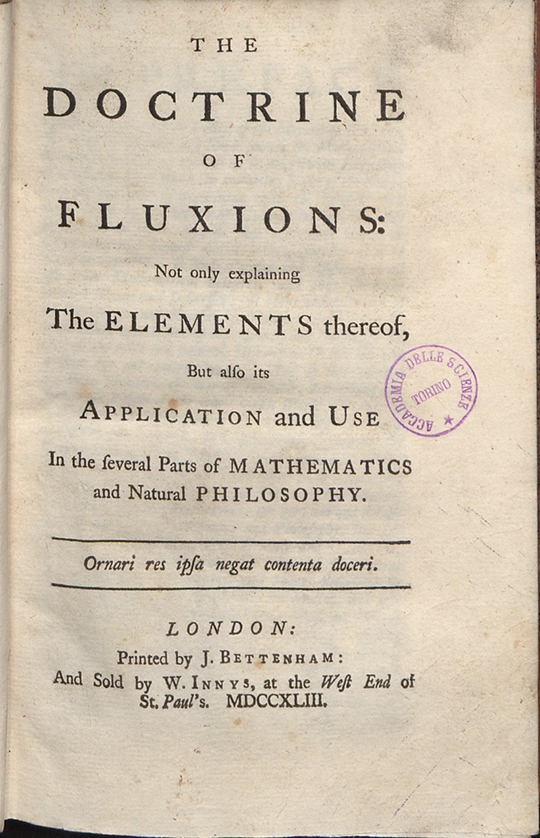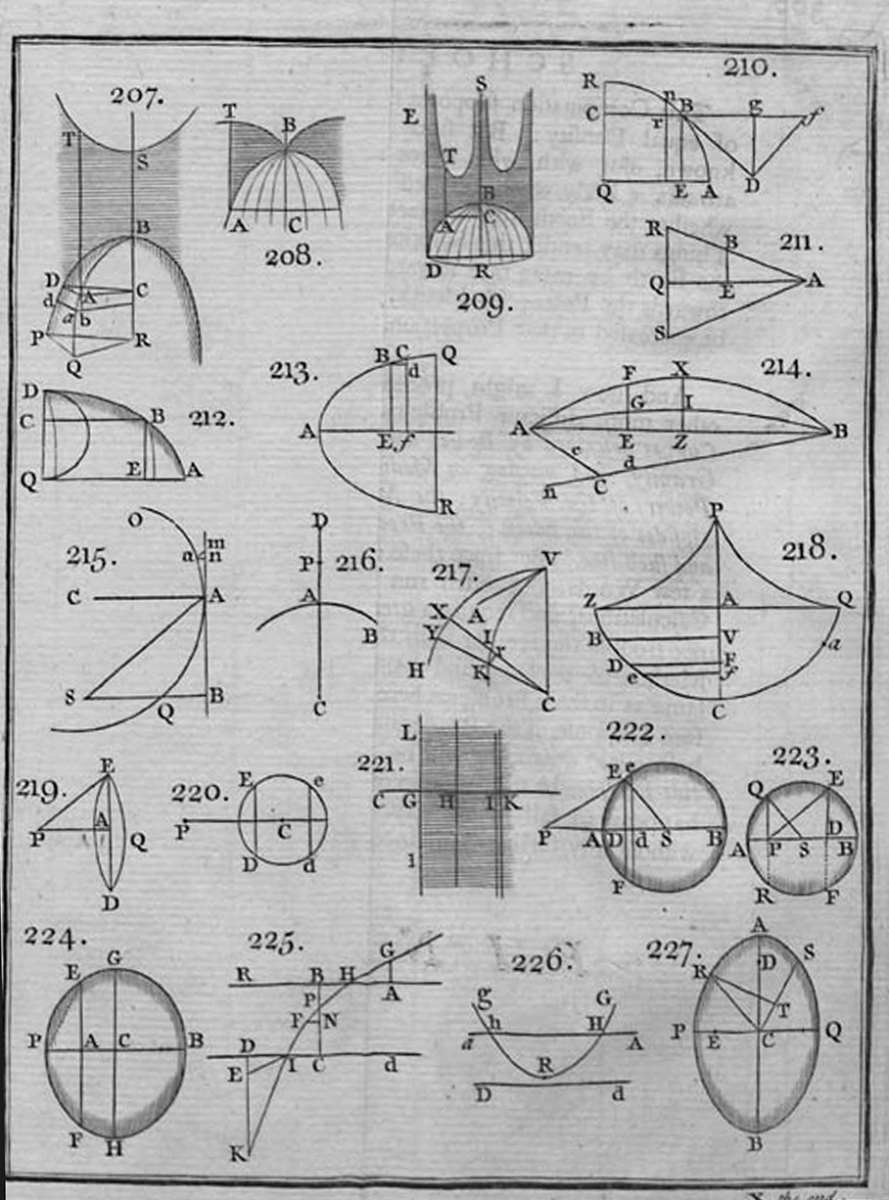- About MAA
- Membership
- MAA Publications
- Periodicals
- Blogs
- MAA Book Series
- MAA Press (an imprint of the AMS)
- MAA Notes
- MAA Reviews
- Mathematical Communication
- Information for Libraries
- Author Resources
- Advertise with MAA
- Meetings
- Competitions
- Programs
- Communities
- MAA Sections
- SIGMAA
- MAA Connect
- Students
- MAA Awards
- Awards Booklets
- Writing Awards
- Teaching Awards
- Service Awards
- Research Awards
- Lecture Awards
- Putnam Competition Individual and Team Winners
- D. E. Shaw Group AMC 8 Awards & Certificates
- Maryam Mirzakhani AMC 10 A Awards & Certificates
- Two Sigma AMC 10 B Awards & Certificates
- Jane Street AMC 12 A Awards & Certificates
- Akamai AMC 12 B Awards & Certificates
- High School Teachers
- News
You are here
Mathematical Treasure: Emerson's Doctrine of Fluxions
William Emerson (1701-1782) was an eccentric English mathematician. He was a small land holder and tried his hand as a school teacher but failed. He retired early from the world in general and devoted his time to music and the writing of mathematics and other scientific works. While Emerson may have failed as a teacher of mathematics, he was a prolific and knowledgeable author of mathematics texts. Eventually he published over a dozen books. His Doctrine of Fluxions (1743) was very popular in England and was used for many years as a basic calculus textbook.
Title page of 1743 first edition of Emerson's Doctrine of Fluxions:

Title page of the 1768 third edition of Emerson's Doctrine of Fluxions:

The “Preface” heaps praise on fluxions and their mathematical power:

The first page of the text supplies basic definitions:

Computational instruction starts on page 5:

The last page (of the 1743 first edition) with illustrations:

Emerson would publish a ten-volume series on mathematics titled Cyclomathesis in 1770. This publication is also featured in Convergence's Mathematical Treasures.
The first and last images above (from the 1743 first edition) are presented courtesy of the Biblioteca Europea di Informazione e Cultura (BEIC), Milan, Italy. The full work can be read through the BEIC website.
The remaining four images above are presented courtesy of the John Adams Library at the Boston Public Library, and are available via Internet Archive.
Frank J. Swetz (Pennsylvania State University), "Mathematical Treasure: Emerson's Doctrine of Fluxions," Convergence (July 2018)




